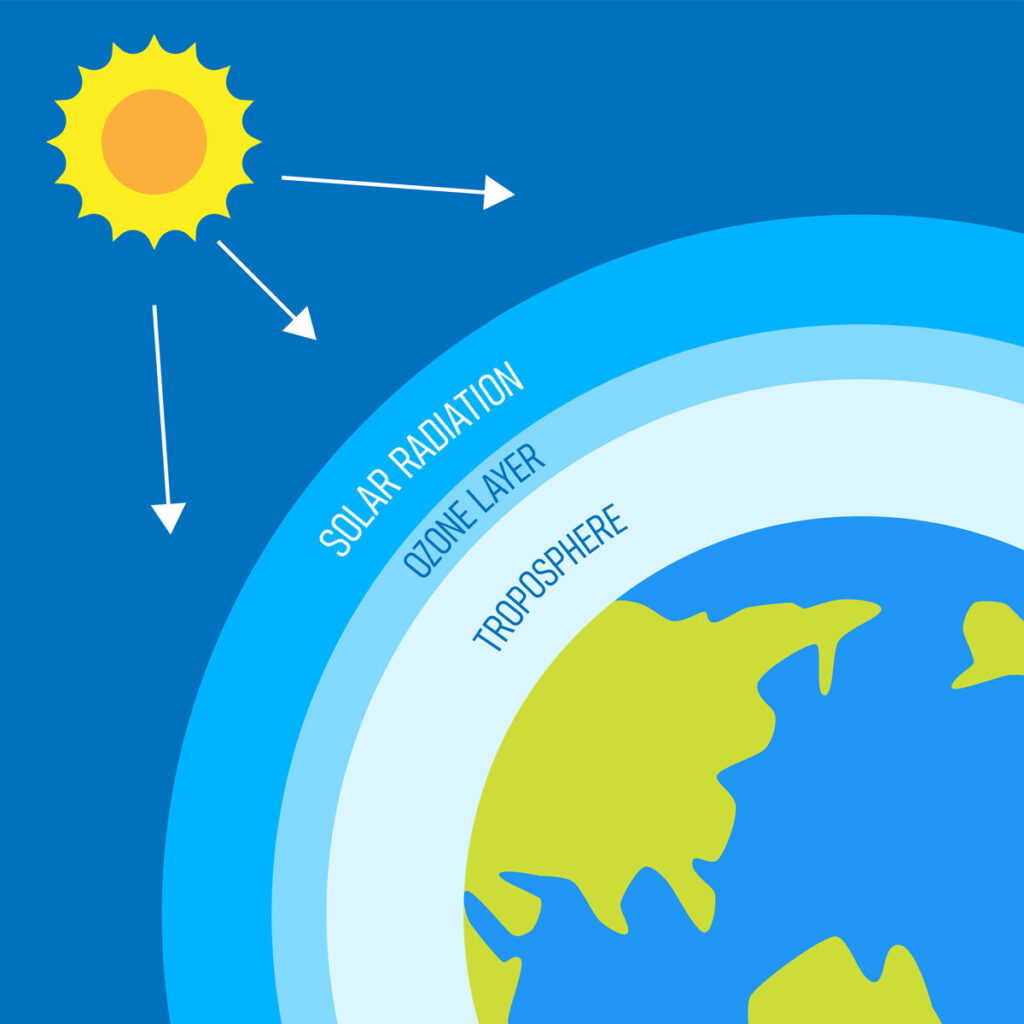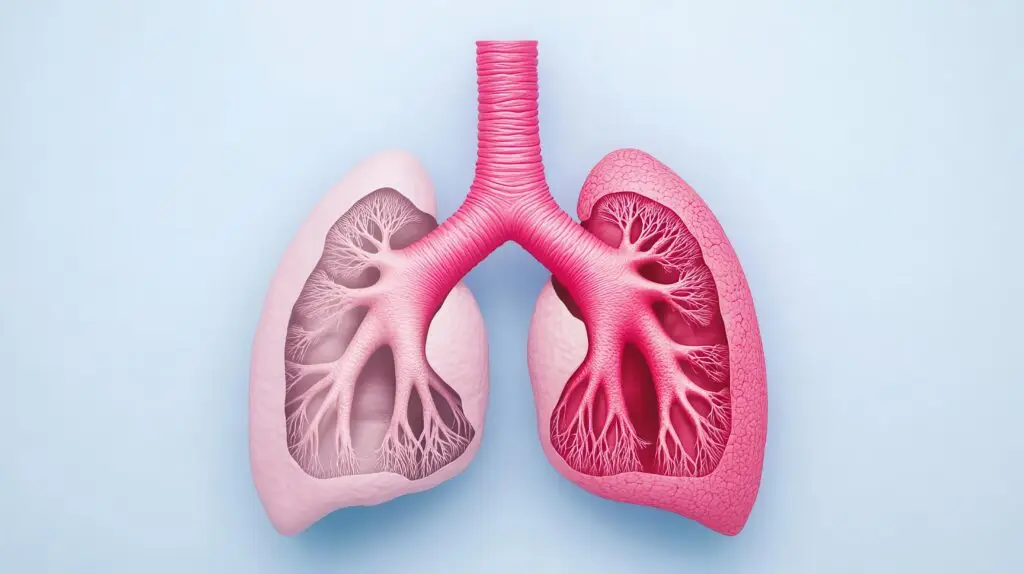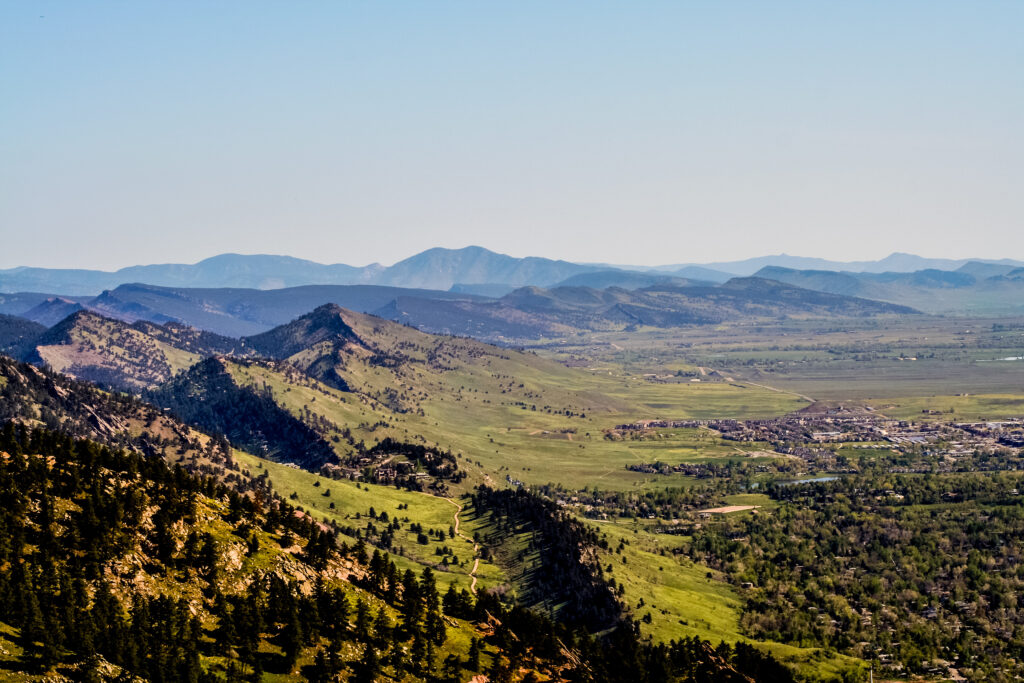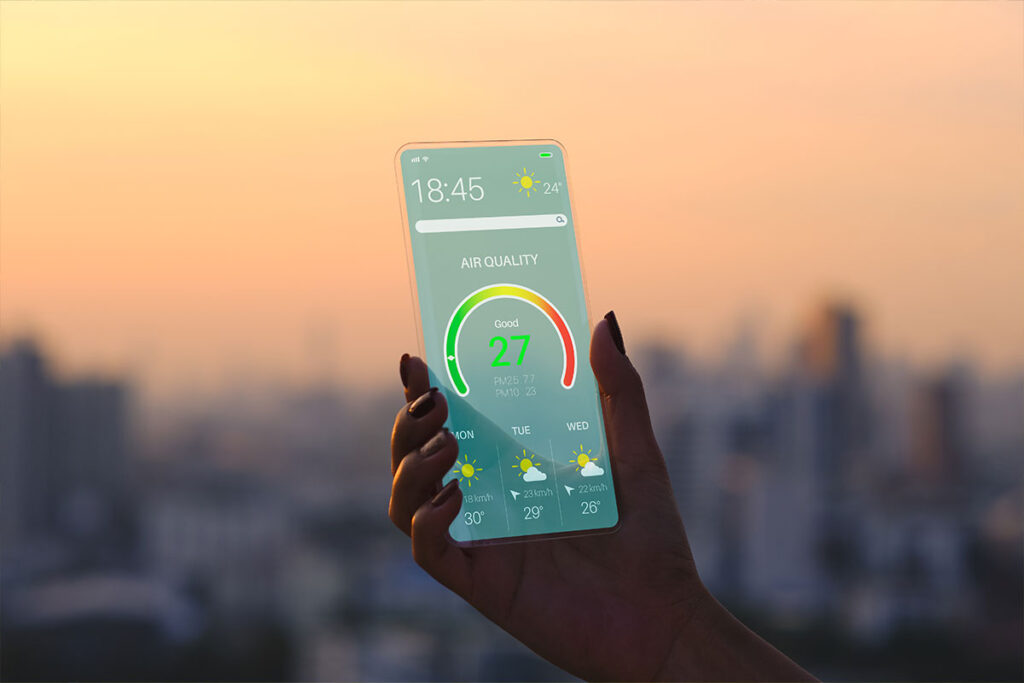Air Quality 101
Air quality is a broad term that defines the overall quality and visibility of indoor or outdoor air. It can be affected by many chemicals, emissions, pollutants, particulate matter, allergens, smoke, odors, carbon dioxide, and greenhouse gases.
Ground-level ozone is the Colorado Front Range’s most pressing air quality issue, which reaches levels harmful to human, animal, and environmental health each summer.
REad More About Air Quality
Ground-Level Ozone
Ozone (O3) is an invisible, naturally occurring gas molecule made up of three oxygen atoms, which moves freely around us in the air. So why is it the Colorado Front Range’s most pressing air quality issue?
Click the yellow buttons to learn more.

Higher up in the atmosphere, ozone serves an important purpose: it protects us from the sun’s ultraviolet radiation, acting as sunscreen for the planet. This “stratospheric” ozone is the ozone layer we know and love! Globally reducing certain harmful emissions has helped heal the hole in the ozone layer over the past several decades.
But in our layer of the atmosphere, “tropospheric” ozone or “ozone pollution” is bad for us. At ground level, high concentrations of ozone are toxic to people and plants: irritating our throats and lungs, making it difficult to breathe, increasing our susceptibility to respiratory infections, and exacerbating ailments such as asthma.
An easy way to remember the difference: “Ozone is good up high, but bad nearby.”
Ground-level ozone is formed when volatile organic compounds (VOCs) and nitrogen oxides (NOx), react in the abundance of sunshine and heat that build up on Colorado summer days — effectively “baking” in the sun to form ozone. You may not have noticed it because you can’t see it, smell it, or taste it. This invisible pollutant even accumulates the most on hot and sunny blue-sky days, when the Colorado air appears clear.
Nitrogen oxides (NOx), most commonly Nitrogen Dioxide (NO2), are highly reactive gases formed by the combustion of fuels. While also emitted naturally by plants, human-made volatile organic compounds (VOCs) are emitted as gases from certain solids or liquids, found in products such as paints, cleaning supplies, and building materials, which can vaporize and contribute to air pollution.
These emissions – known as “ozone precursors” – come mainly from our gas-powered vehicles, gas-powered lawn equipment, and oil and gas production in the Front Range. While industry and traffic may not come as a surprise, gas-powered lawn landscaping equipment – all the mowers, string trimmers, and leaf blowers that local governments, small businesses, and residents use to maintain their properties, from homes to golf courses, and public parks – contribute a surprisingly large amount of emissions to our ozone problem. Other sources of VOCs and NOx include: construction, farm equipment, agriculture, airplanes, power plants and other industrial facilities, and even filling up your car with gas.
When ground-level ozone combines with other air pollution or wildfire smoke, it forms “smog” — which you can see and sometimes smell. However, by itself, ozone is almost always colorless and odorless.
Ground-Level Ozone: Health Impacts
If we cannot see or smell it, why does it matter? Ozone is an irritant that may damage tissues in the respiratory tract. In contrast to the oxygen (O2) molecule we need to breathe, ozone (O3) is harmful to inhale, even at relatively low levels. The American Lung Association compares breathing elevated levels of ozone pollution to getting a sunburn on your lungs.
Depending on the level of exposure, ozone can: (Click the yellow buttons to learn more)

Cause coughing, a sore or scratchy throat, make it more difficult to breathe deeply and vigorously, and/or cause pain when taking a deep breath.
Inflame and damage the airways.
Make the lungs more susceptible to respiratory infections.
Aggravate lung diseases such as asthma, emphysema, chronic bronchitis, and COPD (chronic obstructive pulmonary disorder).
Have acute effects such as headaches and dizziness.
Increase the frequency of asthma attacks. Long-term exposure to ozone is linked to aggravation of asthma, and is likely to be one of many causes of asthma development.
Lead to increases in heart attacks and strokes. Ozone causes inflammation, which stresses the cardiovascular system and lungs, and can impact heart muscle.
Have acute effects such as headaches and dizziness. Or, heighten sensitivity to airborne allergens.
The impacts of ozone and air pollution are not felt equally. People with increased risk from acute and long-term ozone exposure include people with asthma, children, older adults, and people who are active outdoors, especially outdoor workers.
Children are at greatest risk from exposure to ozone because their lungs are still developing and they are more likely to be active outdoors when ozone levels are high. Children are also more likely than adults to have asthma. Days with higher ground-level ozone levels are also associated with increased emergency room visits for children.
Communities of color and low-income communities are often disproportionately impacted in locations that are more susceptible to higher ozone levels and sources of ozone precursors.
Nitrogen oxides (NOx) – an ingredient in ozone pollution – and Nitrogen Dioxide (NO2) specifically, can cause very similar health impacts. In addition, NO2 and other NOx interact with water, oxygen and other chemicals in the atmosphere to form acid rain. Acid rain harms sensitive ecosystems such as lakes and forests.
Ground-level ozone pollution also has negative impacts on plants, reducing plant growth, increasing risk of disease and damage from insects, and lowering agricultural yields, which can cause significant economic losses and harm to populations that depend on crop harvests.
Climate change also means our planet is getting hotter, which not only increases the number of days each summer that are ripe for ozone formation, but extreme heat compounds environmental stressors on the body. Heat deaths are on the rise in the U.S. and around the world due to climate change.
Colorado’s Ozone: Contributing Factors
Ground-level ozone is a major air quality issue in several regions around the country. But why is ozone an issue here?
Despite Colorado’s reputation for “clean mountain air,” our geography and weather patterns are key reasons why ozone continues to be a problem in the Colorado Front Range. Many of us love living here for all these same reasons: our location, our landscapes, and the weather.

First, our hot summer temperatures between 80 and 100 degrees, and sunny, blue sky days often with little wind, are unfortunately the perfect conditions for ozone to form and stick around.
Second, most of Colorado’s population lives along the Front Range, but is spread out enough that vehicle travel is the most common option for residents on a daily basis. Our increased population also increases our overall emissions. This creates a lot of vehicle traffic and a significant use of gas-powered lawn equipment. Our region also has extensive oil and gas operations, and other industry that create emissions. These three factors combined are the main sources of ozone precursors in the Front Range. These are the sources we have the most control over in our efforts to reduce ground-level ozone in our region.
Third, we have many neighbors to our West, from fellow U.S. states to other countries. Their air and their emissions blow eastward into our region. We also have our own beautiful Colorado mountain forests to the west. Trees, like lovely smelling evergreens, naturally produce VOCs, which help form ozone. All that air and the many gas molecules within it contribute to higher “background” levels of ozone in the Front Range.
Fourth, our geography and weather patterns trap that air and its pollution here. We have something called the “Denver cyclone” — a counter-clockwise air circulation that creates stagnation and allows ozone precursors to build during summer mornings, resulting in high ozone levels during the afternoons and early evenings. Additionally, during the summer months the wind normally blows from the plains towards the foothills during the afternoons. This prevailing wind transports pollutants from their sources along the urban corridor towards the foothills. This is why the highest ozone concentrations are often found in western parts of the Front Range up against the mountains, including locations such as Golden, Boulder, and Fort Collins.
Finally, Colorado is a landscape that experiences wildfires, and wildfire smoke can affect the formation of ozone. Our weather and geography are also why it can seem like we always get some of our neighbor’s wildfire smoke here in the Front Range.
Colorado’s Front Range Nonattainment Area
A nonattainment area is a region that fails to meet the National Ambient Air Quality Standards (NAAQS, rhymes with “snacks”) for one or more air pollutants outlined in the Clean Air Act. The length of time that a region has been in nonattainment determines its categorization: moderate, serious, severe, or extreme.
The 9-County Colorado Front Range region has been experiencing high ozone levels for decades, due to the reasons above, and is currently in nonattainment for ground-level ozone for two federal ozone standards.
- Regarding the 2008 federal 8-hour ozone standard (75 ppb): For Adams, Arapahoe, Boulder, Broomfield, Douglas, Denver, Jefferson, and southern portions of Larimer and Weld counties, the nonattainment region is classified as severe. Learn more.
- Regarding the 2015 federal 8-hour ozone standard (70 ppb): For all of Adams, Arapahoe, Boulder, Broomfield, Douglas, Denver, Jefferson, and Weld, and the southern portion of Larimer counties, the nonattainment region is classified as serious. Learn more.
When an air quality standard is not met, the state must develop a plan for how air quality will be improved. As the lead air quality planning organization for the Colorado Front Range, the Regional Air Quality Council (RAQC) develops the State Implementation Plan (SIP) in conjunction with the Colorado Department of Public Health and Environment, which is then considered and approved by the Air Quality Control Commission, a board appointed by the governor. SIP plans then go to the EPA.
For more information about State Implementation Plans, explorations of opportunities to reduce emissions and improve air quality, and general air quality planning activities at the RAQC, please see: https://raqc.org/air_pollution_control_strategies/.

Colorado Air Quality Overall
The Air Quality Index (AQI) is a well-known tool for understanding the impact of outdoor air quality on public health. The EPA establishes an AQI for five major outdoor air pollutants regulated by the Clean Air Act. Each of these pollutants has a national air quality standard set by EPA to protect public health: ground-level ozone, particle pollution (also known as particulate matter, including PM2.5 and PM10), carbon monoxide, sulfur dioxide, and nitrogen dioxide.
Colorado has faced numerous air quality problems in past decades, including high levels of carbon monoxide, PM10, and other pollutants. Through productive regulations on industry and voluntary actions by residents, Colorado has not violated standards for PM10 and carbon monoxide since 1987 and 1995, respectively. In more recent years, however, ground-level ozone has emerged as the Front Range’s largest air quality problem. Working together, we can tackle this new challenge as we did for past concerns.
In January 2025, Colorado also identified five air toxics as “priority” chemicals: benzene, ethylene oxide, formaldehyde, hexavalent chromium compounds and hydrogen sulfide. The state is in the process of setting health-based standards that will limit the amount of each chemical allowed in the air.
Colorado also deals regularly with particle pollution and wildfire smoke. Wildfire smoke is often full of particulate matter and other chemicals. It is harmful to breathe, and can combine to make summer ozone pollution even worse.

Carbon dioxide, methane, and other greenhouse gases are invisible air pollutants that, in excess amounts, are contributing to global warming and human-caused climate change. Colorado is actively working to reduce greenhouse gas emissions to protect a livable climate through the CDPHE Air Pollution Control Division Climate Change Program.
Denver’s “brown cloud” is an older term relating to various air pollution problems in the Denver metro that were a bigger problem about 40 to 50 years ago. While it’s still an important issue, it was significantly improved through the collaboration of residents, businesses, and government agencies. When people refer to Denver’s “brown cloud” today, they often are referring to the visible air pollution we have in the winter months, when denser, heavier cold air gets trapped under a blanket of warm air, known as an inversion. This temperature inversion concentrates pollutants closer to the ground, and results in the yellow-brown strip visible along the horizon. The pollution that creates this unsightly color is mainly from nitrogen oxides (NOx) and sulfur oxides (SOx), as well as tiny particles of grit,dust, and smoke (particulate matter).
Sources
RAQC
https://raqc.org/
CDPHE
EPA
American Lung Association
CoPIRG
University of Colorado Boulder
- https://www.colorado.edu/today/2024/08/16/breathing-front-range-isnt-always-easy-understanding-ozone-pollution
- https://news.cuanschutz.edu/medicine/state-of-the-air-report-reveals-dire-pollution-statistics
- https://news.cuanschutz.edu/news-stories/ozone-pollution-can-make-us-sick-colorado-is-a-high-risk-hub
